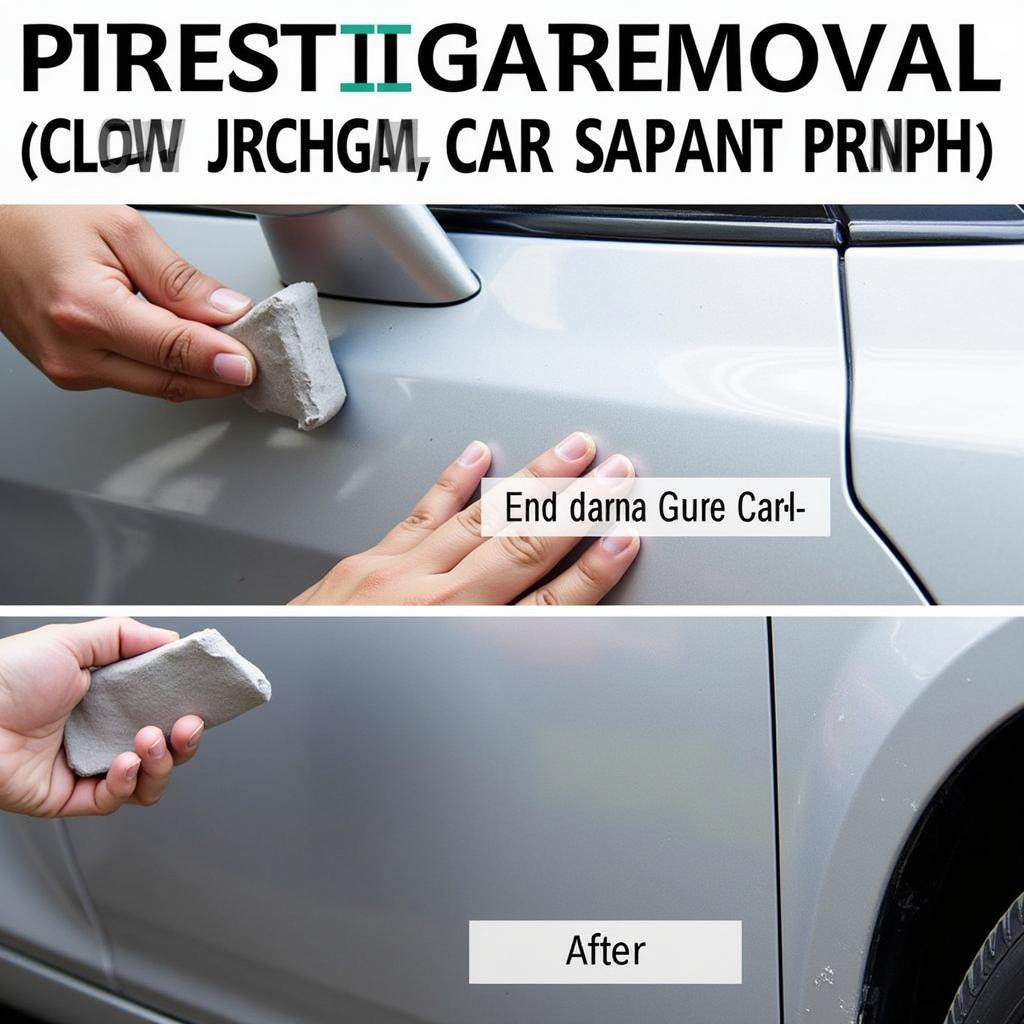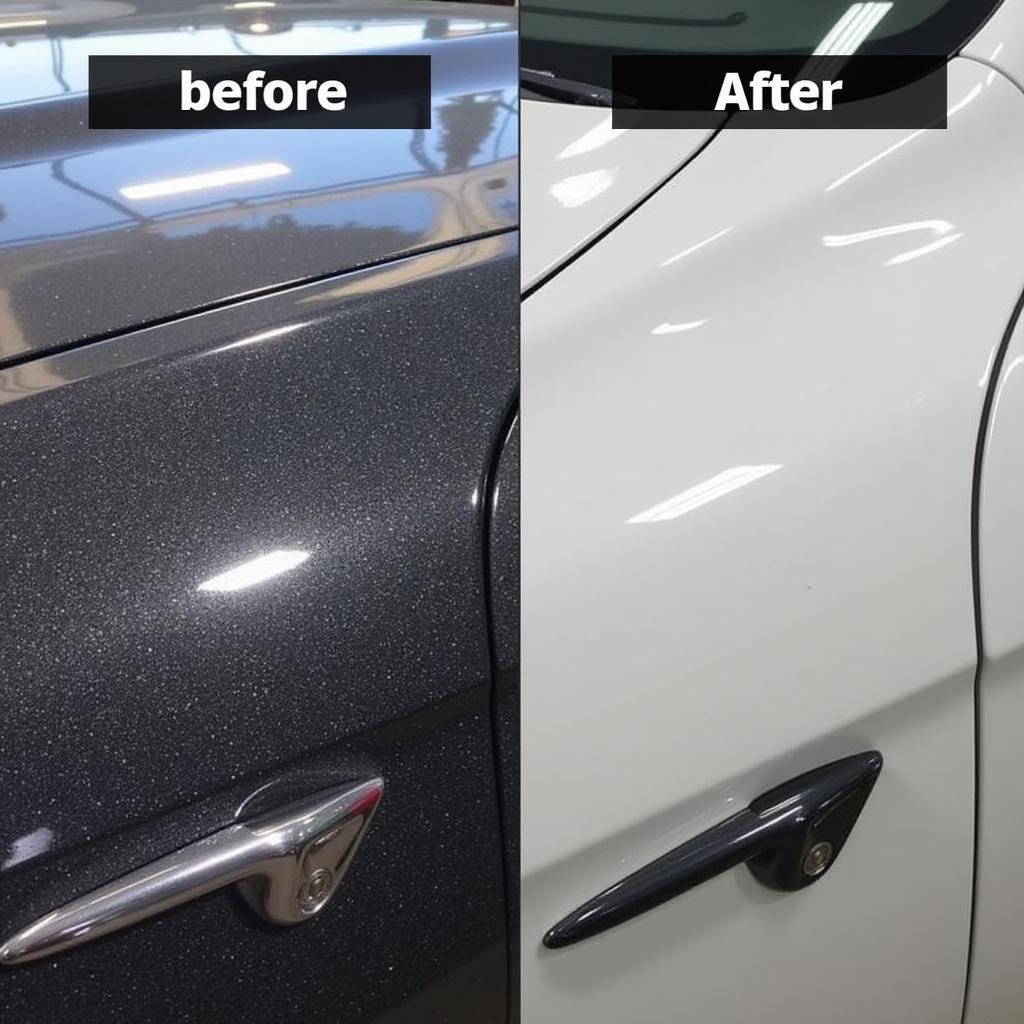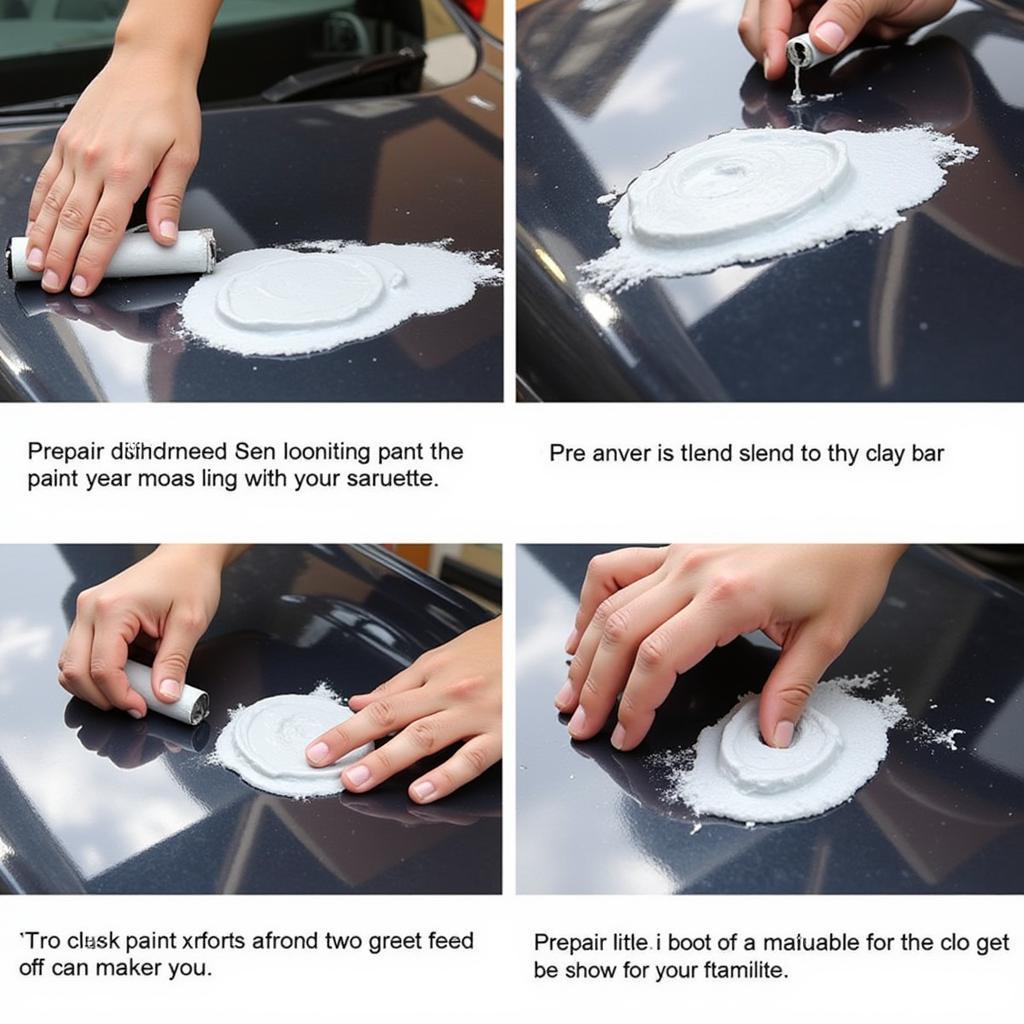Clay detailing, also known as clay barring, is a crucial step in achieving a truly pristine finish on your vehicle. It goes beyond a regular car wash, removing contaminants that washing alone can’t handle. This process involves using a specialized clay bar to lift embedded particles from your car’s paint, glass, and even headlights, leaving a smooth, glass-like surface. It’s a vital part of car detailing that prepares the surface for polishing and waxing, ultimately enhancing the shine and protection of your car.
If you’re aiming for a showroom-worthy shine, understanding clay detailing is essential. It’s a process that removes bonded contaminants like industrial fallout, tree sap, brake dust, and overspray, restoring the smoothness of your car’s paintwork. This article will delve into the specifics of clay detailing, explaining its benefits, the process, and how it fits into a comprehensive car detailing regimen. You’ll learn why it’s more than just a car wash and how it contributes to the longevity and beauty of your vehicle’s finish. You can also learn more about car detailing in general on our website which has articles covering topics like what is car detailing mean.
Why is Clay Detailing Necessary?
Even after a thorough car wash, microscopic contaminants can remain bonded to your car’s paint. These contaminants create a rough surface, diminishing the shine and making your car more susceptible to further damage. Clay detailing effectively removes these stubborn particles, resulting in a noticeably smoother and cleaner surface.
How Does Clay Detailing Work?
Clay detailing works by gently lifting and removing these embedded contaminants. The clay bar acts like a magnet, attracting and trapping the particles. This process is safe for your car’s paint when done correctly, as the clay is designed to be non-abrasive.
What are the Benefits of Clay Detailing?
The benefits of clay detailing extend beyond just a cleaner car. It enhances the effectiveness of subsequent detailing steps like polishing and waxing, allowing them to bond better and last longer. This, in turn, provides better protection for your car’s paint against environmental factors.
 Clay Bar Removing Contaminants from Car Paint
Clay Bar Removing Contaminants from Car Paint
How Long Does Clay Detailing Take?
The time required for clay detailing depends on the size and condition of your vehicle. Generally, it can take anywhere from 30 minutes to a couple of hours. Learn more about the timeframe of detailing services in our article about how long does a detail take on a car.
What are the Steps Involved in Clay Detailing?
- Wash and Dry: Thoroughly wash and dry your car to remove loose dirt and debris.
- Lubricate: Apply a dedicated clay lubricant to the surface to allow the clay bar to glide smoothly.
- Clay the Surface: Gently rub the clay bar across the lubricated surface in back-and-forth motions.
- Fold and Knead: Regularly fold and knead the clay bar to expose a clean surface.
- Wipe Clean: Wipe the residue with a microfiber towel after claying each section.
- Inspect and Repeat: Inspect the surface and repeat the process if necessary.
When Should I Clay Bar My Car?
Ideally, clay barring should be done before polishing and waxing your car. This ensures a perfectly smooth surface for the subsequent steps, maximizing their effectiveness. You may also find helpful information regarding different detailing products, like Graystone, in our dedicated article what is graystone product in car detailing.
 Car Surface Before and After Clay Detailing
Car Surface Before and After Clay Detailing
“Clay detailing is like giving your car’s paint a deep cleanse,” says renowned detailing expert, Michael Davies. “It’s essential for preparing the surface for polishing and waxing, ensuring a truly flawless finish.”
Is Clay Detailing Safe for All Car Finishes?
Yes, clay detailing is safe for all car finishes when performed correctly. However, it’s crucial to use a high-quality clay bar and lubricant designed specifically for automotive use.
Does Clay Detailing Remove Scratches?
Clay detailing primarily removes bonded contaminants, not scratches. Deeper scratches require different methods like polishing or paint correction. If you are looking for a reputable place to have your car detailed, you may want to check our article on where to get car detailed from amce.
 Applying Clay Lubricant Before Clay Barring
Applying Clay Lubricant Before Clay Barring
“Many people overlook the importance of clay detailing,” says Sarah Miller, a seasoned automotive detailing specialist. “It’s a fundamental step that significantly impacts the overall quality and longevity of your car’s paint.”
In conclusion, clay detailing, a critical aspect of car washing, goes beyond a simple wash to remove embedded contaminants. This process, utilizing a clay bar and lubricant, yields a smoother, cleaner surface, optimizing the effectiveness of polishing and waxing, thus ensuring a showroom-worthy shine and extended paint protection.
FAQ
- What is clay detailing? Clay detailing is the process of using a clay bar to remove contaminants bonded to a car’s surface.
- How often should I clay my car? It depends on how often you drive and the environment, but generally every 6-12 months is recommended.
- Can I clay bar my car myself? Yes, with the right tools and techniques.
- What kind of clay bar should I use? Use a high-quality clay bar designed for automotive use.
- Is clay detailing necessary for a new car? While not always essential, it can remove any contaminants picked up during transportation or storage.
- Can I use any soap and water as a lubricant? No, use a dedicated clay lubricant for optimal results.
- What should I do after clay detailing? Follow up with polishing and waxing for enhanced protection and shine.
You might also be interested in reading “what does it mean to get car detailed” for a more comprehensive understanding of car detailing services.
Need help with your car detailing? Contact us via WhatsApp: +1(641)206-8880 or Email: [email protected]. Our customer service team is available 24/7.

Leave a Reply